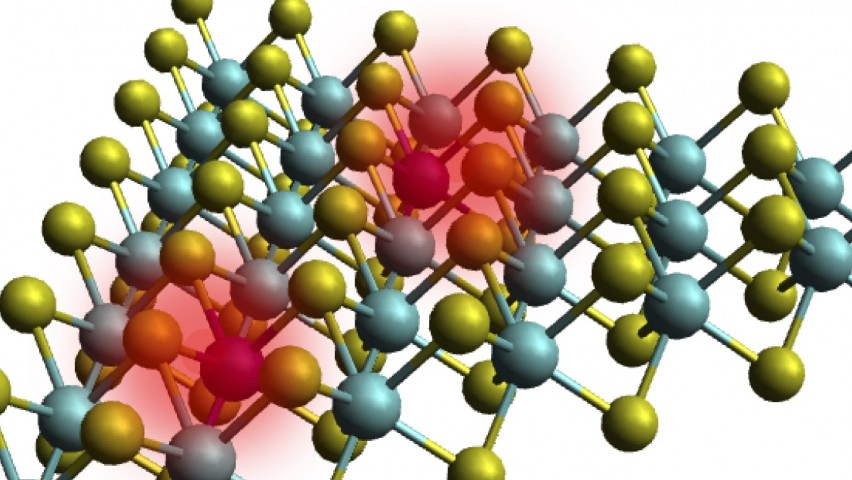May 14 2020
With computers, laptops, and smartphones getting faster and smaller, the transistors within them to control electricity flow and information storage must also reduce in size and become faster. However, conventional transistors can shrink only to an extent.

Image Credit: Stevens Institute of Technology.
At present, researchers from Stevens Institute of Technology have created a new atomically thin magnetic semiconductor that will enable the development of new transistors that function in a totally different way; apart from harnessing the charge of an electron, they also tap the power of its spin, thus offering an alternative path to developing ever smaller and faster electronics.
The new discovery, published in the April 2020 issue of Nature Communications, does not rely on developing smaller and smaller electrical components. By contrast, it potentially offers a vital platform for improvements in the field of spintronics (spin + electronics), a fundamentally new technique to operate electronics and a sought-after alternative to continued miniaturization of standard electronic devices.
Apart from eliminating the miniaturization barrier, the new atomically thin magnet can also achieve less energy consumption, faster processing speed, and higher storage capacity.
A two-dimensional ferromagnetic semiconductor is a material in which ferromagnetism and semiconducting properties coexist in one, and since our material works at room temperature, it allows us to readily integrate it with the well-established semiconductor technology.
EH Yang, Study Lead and Professor of Mechanical Engineering, Stevens Institute of Technology
According to Stefan Strauf, a professor of physics at Stevens, “The magnetic field strength in this material is 0.5 mT; while such weak magnetic field strength cannot allow us to pick up a paper clip, it is large enough to alter the spin of electrons, which can be utilized for quantum bits applications.”
The first generation of computers occupied an entire room; however, existing ones can fit in the back pocket of a user. Moore’s law is the foundation for this, which proposes that the number of transistors used on a computer chip will double every two years, thus effectively doubling the speed and capability of a gadget. However, transistors can become small only to a certain extent before the electrical signals that they are supposed to control no longer follow their commands.
A majority of the experts anticipate that Moore’s law will end by 2025, but alternative methods, which do not depend on physical scaling, have been analyzed. Rather than depending solely on their charge, controlling the spin of electrons might offer a solution in the future.
A new magnetic semiconductor developed using two-dimensional materials (which are two atoms thick) will enable creating a transistor to manipulate electricity by controlling the spin of an electron, either up or down, while maintaining the whole device flexible, lightweight, and transparent.
Yang and his colleagues employed a technique known as in situ substitutional doping to successfully produce a magnetic semiconductor, which involves substitutionally doping a molybdenum disulfide crystal with isolated iron atoms.
In this process, the iron atoms remove a few of the molybdenum atoms and occupy their place, in the accurate spot, thus developing a flexible and transparent magnetic material, which is only two atoms thick. The researchers found that the material remains magnetized at room temperature. Moreover, as it is a semiconductor, it is possible to directly integrate it into the current architecture of electronic devices in the future.
Yang and his colleagues at Stevens collaborated with various institutions to image the material—atom wise—to demonstrate that the iron atoms occupy the place of a few of the molybdenum atoms. The institutions were the University of Rochester, Rensselaer Polytechnic Institute, Brookhaven National Laboratory, and Columbia University.
To do something great in science, you need to get others to collaborate with you. This time, we brought all the right people together—labs with different strengths and different perspectives—to make this happen.
Shichen Fu, PhD Student in Mechanical Engineering, Stevens Institute of Technology
Journal Reference:
Fu, S., et al. (2020) Enabling room temperature ferromagnetism in monolayer MoS2 via in situ iron-doping. Nature Communications. doi.org/10.1038/s41467-020-15877-7.